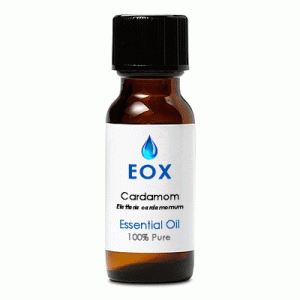|
Characteristics:
A colorless to pale yellow liquid with a sweet-spicy, warming fragrance
and a woody-balsamic undertone. It blends well with rose, frankincense, orange, bergamot, cinnamon,
cloves, caraway seed, ylang-ylang, labdanum, cedarwood, neroli, and oriental-type bases in general.
Principal Constituents:
These are naturally occuring in the essential oil.
- terpinyl acetate
- cineol
- limonene
- sabiene
- linalol
- linalyl acetate
- pinene
- zingiberene
General Actions:

 Open Symbols Key
Open Symbols Key
Antispasmodic, aphrodisiac, carminative, cephalic, digestive, diuretic, sialogogue, stimulant, stomachic, tonic (nerve).
Safety:
Non-toxic, non-irritant, nonsensitizing.
Primary Therapy Agent:
Griping pains, heartburn, indigestion, flatulence.
Secondary Therapy Agent:
Colic, cramp, gastric spasm, loss of appetite, nausea, vomiting, nervous exhaustion, fatigue,
nervous tension, stress-related conditions.
Important Note:
The information on Florapathics.com is
only provided for educational purposes, and further research should be done
on each essential oil to be assured of its proper usage for each individual.
Aromatherapy is not meant to be a replacement for care under a qualified
health professional, but should be considered a complimentary modality.
|







